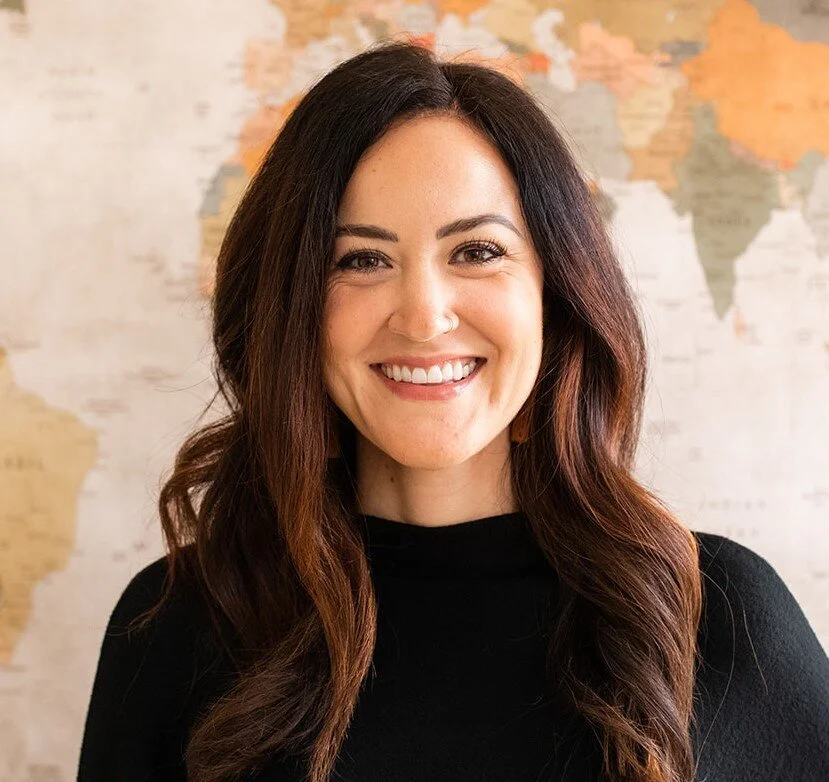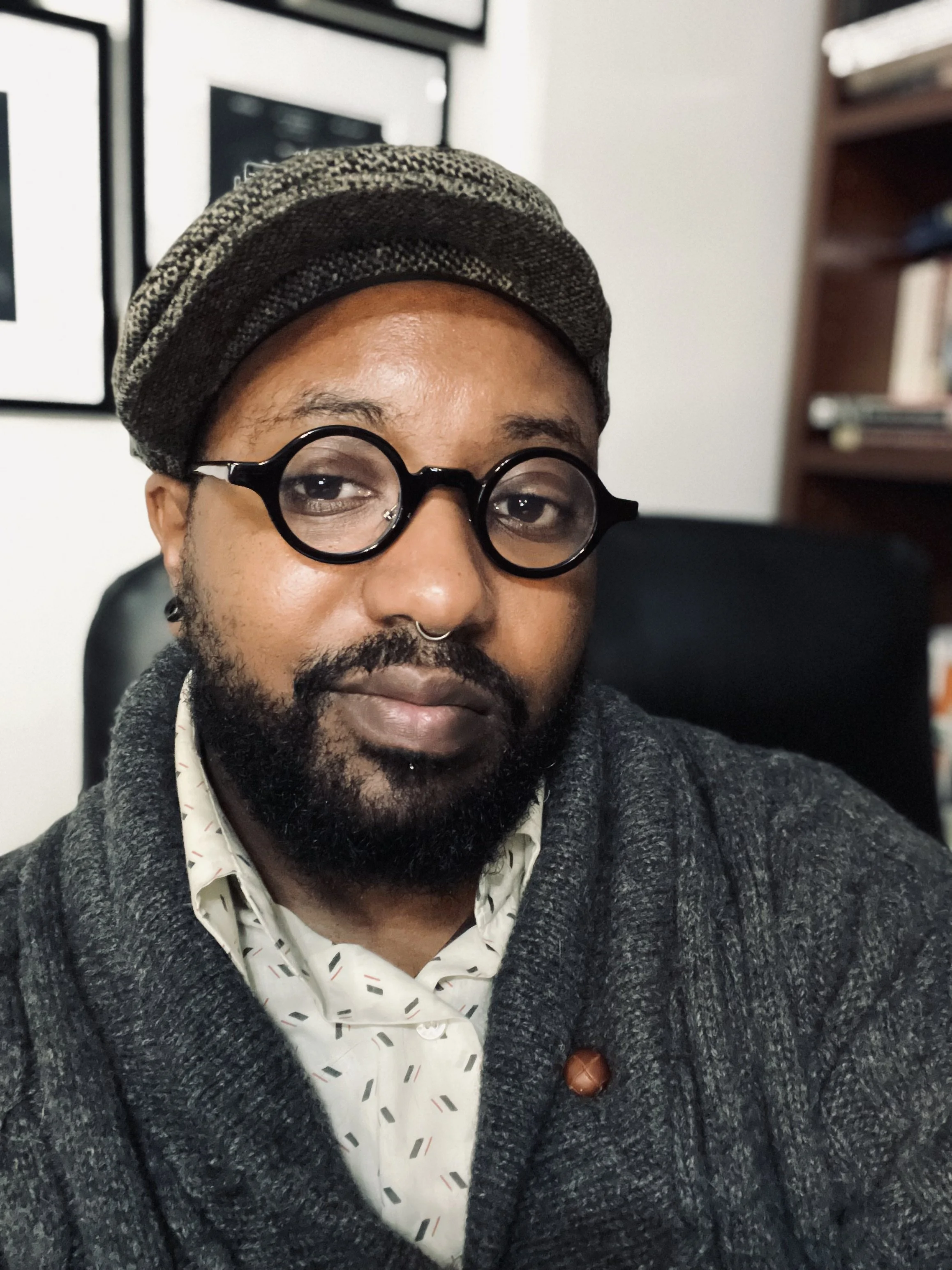9 Accessible Practices to Live More Intentionally (from Inner Work Practitioners)
Over the course of the past few months, I’ve been writing a lot about how we can develop an inner work practice that fits us.
This kind of practice isn’t one-size-fits-all; it’s not inflexible; it’s not forever. Just as the seasons of our lives change, we’re invited to embody practices that shift and dance a bit too. The first intentional practice I engaged when I was 18 doesn’t fit who I am anymore – I’ve thankfully changed quite a bit! – and it would only lead to frustration if I tried to force it.
I recently reached out to several inner work practitioners who ground themselves in different modalities and asked them to share the practice that has made, or is making, the biggest impact in their life.
As you read their responses below, I invite you to think about your own life and if one of their practices might serve as inspiration for your own.
Credit: Monica Gomez
Asking “What Do I Want?”
Joy Vetterlein, Writer + Coach for Post-Evangelicals
Because legalism was such a stronghold in my mind for so long, I’ve had to completely let go of the concept of most spiritual practices or disciplines, because I simply can’t do it without becoming very rigid and intense about it. Instead, I’ve tried to strengthen my inner goodness by asking “what do I want?” regularly, and then doing it.
Sometimes what I want is to take a nap…so I intentionally rest to achieve what I want. Sometimes what I want is to feel less anxious…and then I know that journaling is a tool that helps me feel less anxious. Sometimes what I want is a day off…and then I’ll binge a show and feel fine about it. Sometimes what I want is to feel less sluggish…so I’ll go for a walk because I know that helps me feel better.
If I start by having a bunch of disciplines or practices, I quickly become their servant and suffer. But by starting asking myself what I want – both in the short term and long term – it helps me keep any practices in their rightful place of serving me.
Rituals of Intention Setting
Emily Sloan, Trauma Therapist + Self-Trust Guide
One of the most impactful inner work practices I’ve done for many years now is to create ritual around setting intentions.
I carve out time at least 1-2 times per year to reflect on the past year and then set intentions for the what comes next. And I do make it a ritual. I love to get out in nature for a hike before I begin the process. Then, I make my favorite tea, snuggle up in a cozy blanket and take a couple hours to really reflect on what is working in my life and what’s not.
I take time to acknowledge and celebrate wins. And I get clarity on where I want to pivot. I take a break for more tea before returning to the writing practice to set intention for the year ahead. I also have a separate time when I do this for my business and a joint session with my partner.
This has become a non-negotiable practice for me, to live the intentional life I desire.
I created a 20-page Reflect + Set booklet that I use as a guide now, after being inspired by YearCompass. If you want a framework for how to approach this practice, you can download either for free.
Journaling Practice
Taj M. Smith, Writer + Burnout Coach
My journaling practice is my lifeline right now. I just write whatever comes to mind, similar to Morning Pages in The Artist's Way, but different in that I don't set a timer and I take time to identify action steps if there are any.
For me, writing has always been how I synthesize my thoughts. Clarity escapes me unless I can write something down. It's the act of writing itself: consciously moving my thoughts down through my arm to paper helps me keep in mind that there are actions I can take, even if nothing seems actionable at the moment. Sometimes, the act of writing is enough.
Befriending Parts of Myself
Morgan Chantelle, Emotional Regulation Coach
To survive in childhood I had to disconnect from my intuition and innate sense of self. Somatic Experiencing has helped me embody a felt sense of safety and alignment and free me coping mechanisms that keep me stuck.
Inner child work, along with Internal Family Systems, which I have more recently begun to use personally and professionally, has helped me to befriend and integrate parts of myself that I had previously rejected and repressed.
Healing to me means radical self-love and self-acceptance. It means discovering and embodying my truest sense of self and living a life of peace and equanimity.
20-Minute Morning Walk
James A. Pearson, Poet + Coach
This is a super simple practice. I just put my phone away and step out the door. Then walk for 20 minutes.
My walks connect me with the world. I get to see what it's doing day by day, season by season. I get to hear what's happening out there. I get to feel the cold breeze or the sunshine or the drizzle. And over time I notice how all those things have echoes and reflections inside me. A lot of my poems started from a simple morning walk.
Nourishing Touch Practice
Jessica Denise Dickson, Enneagram Guide + Freedom Creatrix
My practice is to take time to put oils or lotion on my body.
Embodiment is not only nervous system regulation or somatic practices, but also how we relate to our body and how we’re in relationship with our actual bodies.
This practice gives me the chance to slow down. To feel the texture of my skin and the way it transforms as it’s moisturized. To lovingly nourish every part of my body regardless of how I feel about it. I just start with my face and slowly go down, one body part at a time. It helps me be more aware of my body throughout the day and especially when I touch my soft skin!
10-Minute Public Journaling
Brandon Wong, Somatic Coach + Facilitator
When I started George Kao's Soul Gym program, I started journaling every morning...but soon I realized, I wasn't actually "publicly" creating. So I emailed three close people in my life – my parents, uncle, and close friend from college – and asked if I could BCC them on an email every weekday where I would journal “out loud” with them.
My intentions have been to let myself play, create lightly, and see what emerges after I've done this 100 times. (So far, I'm on post #71!) I'm enjoying practicing self-expression in this way and experimenting with what wants to come out that day. For example, my formats have ranged from text to video, from stream-of-consciousness sharing of "parts" inside me or here-and-now focusing on sensations in the body to dreams I'm having about the kind of life I want to live, an emotional experience I just had, or a dilemma that I'm feeling stuck around.
I feel more self-expressed, in tune with my deepest longings, and honest with myself about what I'm really experiencing.
Tender Touch
Caryn Berley, Transformationalist + Somatic Enneagram (TM) Facilitator
Lately I’ve been doing a practice I call Tender Touch. A few times a day, I pause and check in with my breath. I notice my thoughts, my emotions, and my physiology and ask my body if it’s available for some touch. If it is, I start by giving myself a hug, gently squeezing or rubbing my arms intuitively, offering affection through touch like I may to a child or a dear friend. I do this for anywhere from a few seconds to a few minutes, letting my body communicate what it is desiring. Sometimes I include other parts of my body, really listening to what feels nurturing in the moment. I breathe into the experience, noticing how I am both giving and receiving.
Through this practice, I’ve noticed an increase in self-attunement and self-trust, more ease in voicing my needs, and an increased level of patience with myself and others.
Body Awareness
Aaron Potratz, Licensed Professional Counselor
I will take time, usually at the end of the day when I have some space and things have accumulated, to sit somewhere quiet and pay attention to my body. I focus on connecting with the physical sensations I feel in my body, not attaching any thoughts, emotions, or stories to them but just noticing what I feel. I let my body tell the story.
My "mind's eye" stays focused on the sensations in my body, kind of like the Eye of Sauron watching them as they move and shift. I use mindfulness to notice any thoughts or feelings that may arise, but don't do anything with them. I just notice.
After 5-10 minutes of this, I feel more grounded and connected with myself. I also have more awareness of what I might be feeling and why; I understand myself better because I spent time reconnecting with me.
If engaging a daily practice sounds like something you’d like to do with support and community, check out our upcoming 30-day inner work cohort.








